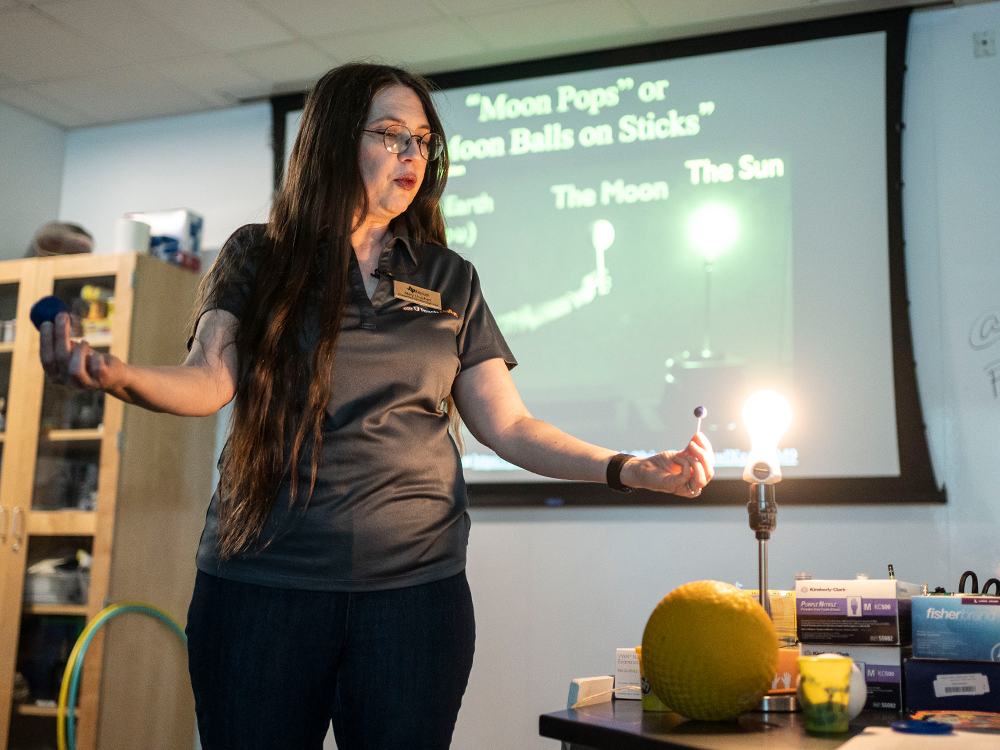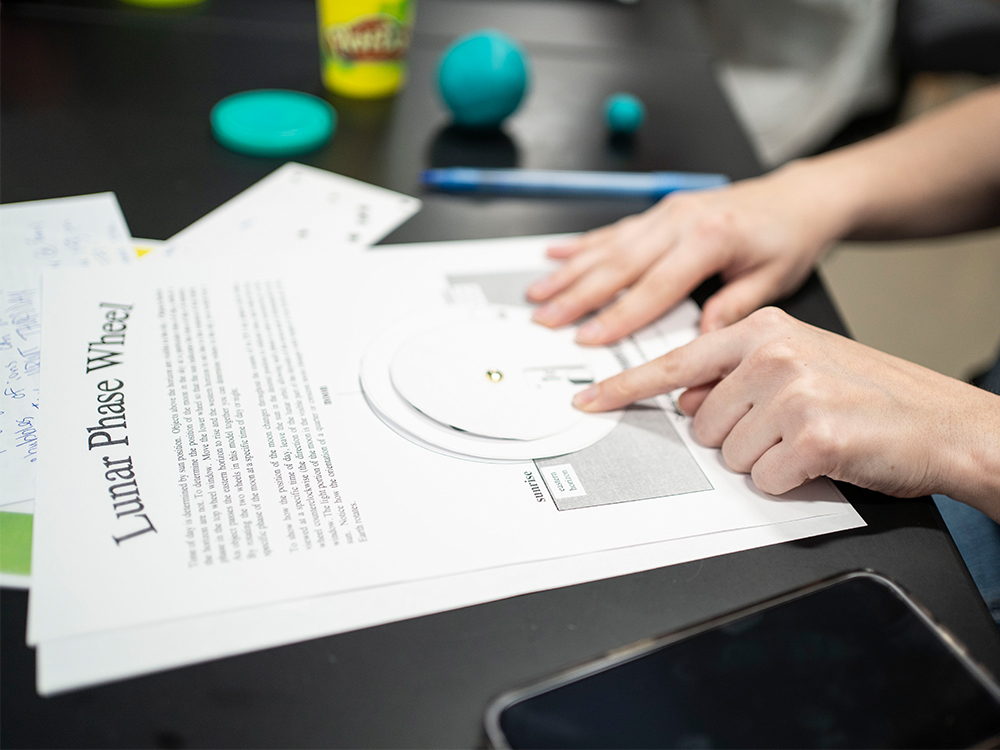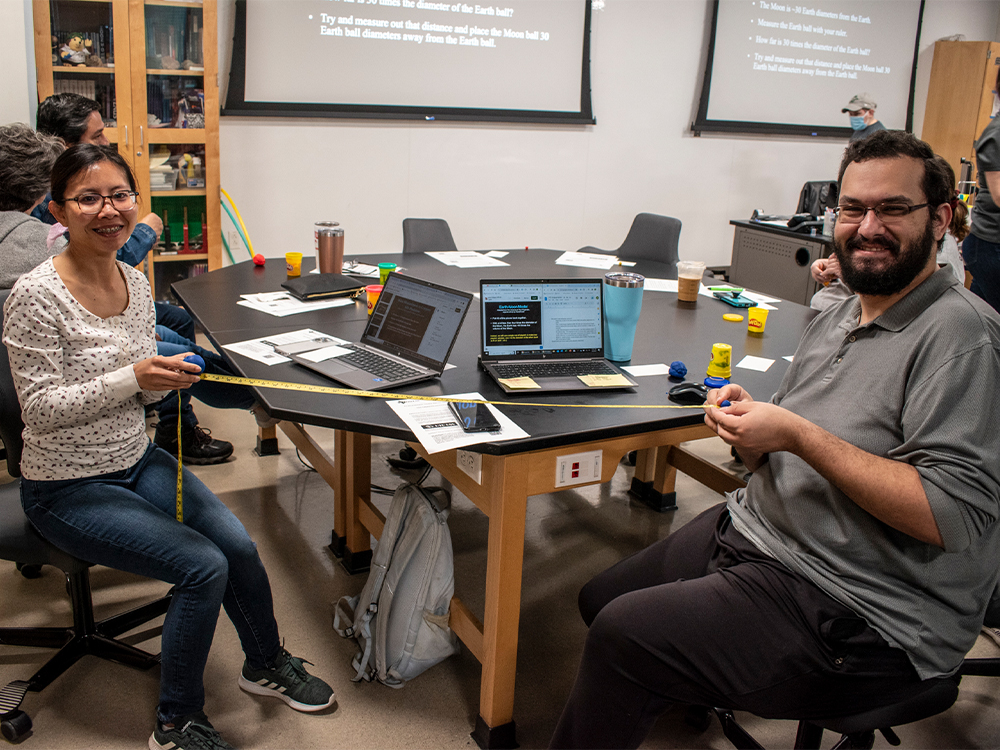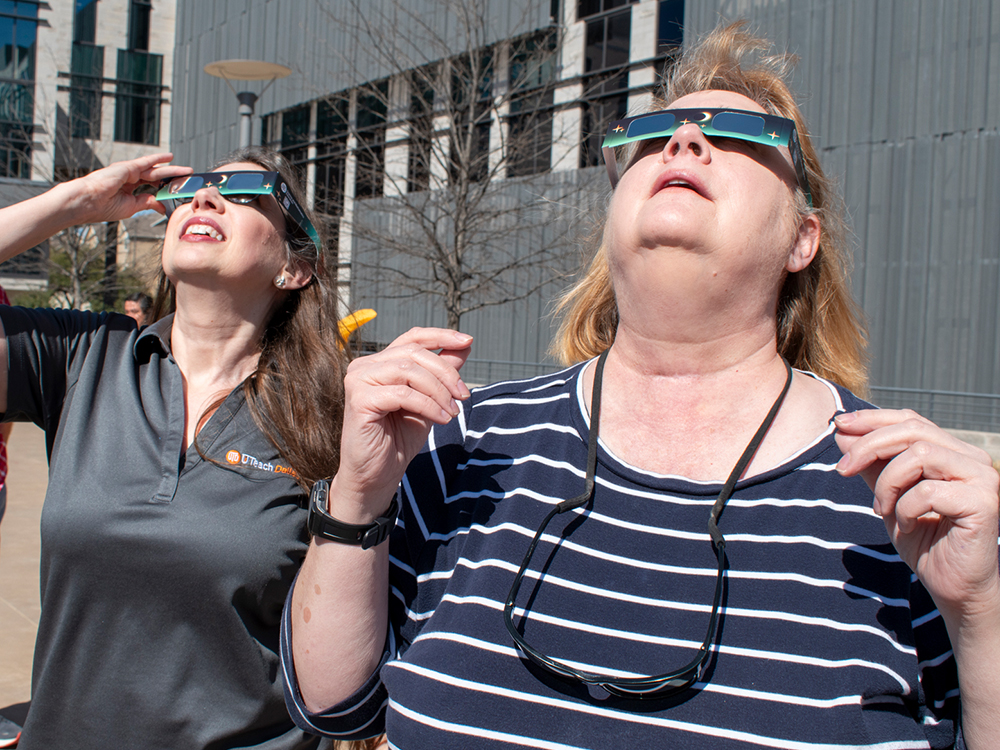Teaching the Teachers: Bringing the Solar Eclipse into the Classroom
03.06.2024
 Dr. Mary Urquhart, department head of science/mathematics education at UT Dallas, uses props to demonstrate the sun-Earth-moon system to teachers.
Dr. Mary Urquhart, department head of science/mathematics education at UT Dallas, uses props to demonstrate the sun-Earth-moon system to teachers.
On a recent Saturday, more than 50 educators from North Texas went “back to school” at The University of Texas at Dallas to learn how to bring the excitement and science of the April 8 total solar eclipse to their classrooms.
Dr. Mary Urquhart, planetary scientist and associate professor and department head of science/mathematics education in the School of Natural Sciences and Mathematics, led the teacher workshop. She has already reached more than 450 Texas K-12 and college educators via free in-person and virtual teacher workshops about the eclipse.
Urquhart teaches astronomy and other related courses and directs the UTeach Dallas program, which prepares science and math majors for teaching careers. A leader in education outreach, she also develops curriculum and leads graduate and continuing-education programs for teachers.
 Teachers used a lunar phase wheel to understand how the phase of the moon relates to a solar eclipse.
Teachers used a lunar phase wheel to understand how the phase of the moon relates to a solar eclipse.
On April 8, the moon will pass between the sun and Earth, blotting out the sun and casting a shadow across a very narrow swath of the continental U.S. and parts of Mexico and Canada. The Dallas-Fort Worth area will be directly in the path of the total solar eclipse, which will bring a few minutes of darkness, or totality, during midday.
While some Texas school districts in the path of totality have canceled classes on April 8, many will still be in session. Urquhart said teachers come to the workshops to learn how to view the eclipse safely, as well as to get tips on hands-on activities and lessons to incorporate the eclipse into state curriculum standards.
Mohammad Saleh BS’21, MAT’23 teaches at J.J. Pearce High School in the Richardson Independent School District, which is supplying eclipse safety glasses to its students. Saleh attended the on-campus workshop seeking information about the solar eclipse that he could connect to his biology and environmental systems classes.
 Ngoc Bui BS’23 (left), who teaches chemistry at Berkner High School and STEM Academy, and Mohammad Saleh BS’21, MAT’23, who teaches biology and environmental systems at J.J. Pearce High School, both in the Richardson ISD, shaped modeling clay into scale models of the Earth and moon.
Ngoc Bui BS’23 (left), who teaches chemistry at Berkner High School and STEM Academy, and Mohammad Saleh BS’21, MAT’23, who teaches biology and environmental systems at J.J. Pearce High School, both in the Richardson ISD, shaped modeling clay into scale models of the Earth and moon.
“The April event offers a unique opportunity to see how a solar eclipse affects humans and the environment,” Saleh said. “We’re going to have a mini-night in the middle of the day. I’d like to tie this to human circadian rhythms, as well as to how animals and insects behave differently during a total eclipse.”
Urquhart said teachers can incorporate aspects of the eclipse into many subject areas, from physical sciences and math to discussions of tides and atmospheric chemistry. During workshops, she orients toy plastic hoops to illustrate the orbit of the moon around the Earth and has teachers shape modeling clay into scale models of the moon and Earth.
 Amy Angel (right), who teaches fifth graders at Centerville Elementary School in the Garland ISD, joined workshop leader Dr. Mary Urquhart in practicing safe viewing of the sun using eclipse glasses.
Amy Angel (right), who teaches fifth graders at Centerville Elementary School in the Garland ISD, joined workshop leader Dr. Mary Urquhart in practicing safe viewing of the sun using eclipse glasses.
“I was looking for ideas on how to get my students excited about such a special event and ways to open their minds to nature and science,” said workshop participant Amy Angel, who teaches fifth graders at Centerville Elementary School in the Garland ISD. “I came away with a better understanding of the scale of the sun-Earth-moon system as well as some ideas on how to organize events at our school.”
During one workshop exercise, participants went outside and donned eclipse glasses to practice safely viewing the sun. They also viewed sunspots on a live projected image of the sun.
“It’s my department’s mission to support excellence in STEM education here in North Texas. Sharing excitement, science and safety for the upcoming rare celestial event of the total solar eclipse with classrooms and our community aligns with that mission. For us, that starts with supporting teachers, including the many UT Dallas alumni who are teaching in schools throughout the Dallas-Fort Worth area,” Urquhart said.
Educators can access eclipse resources on the Department of Science and Mathematics website.
–Amanda Siegfried
